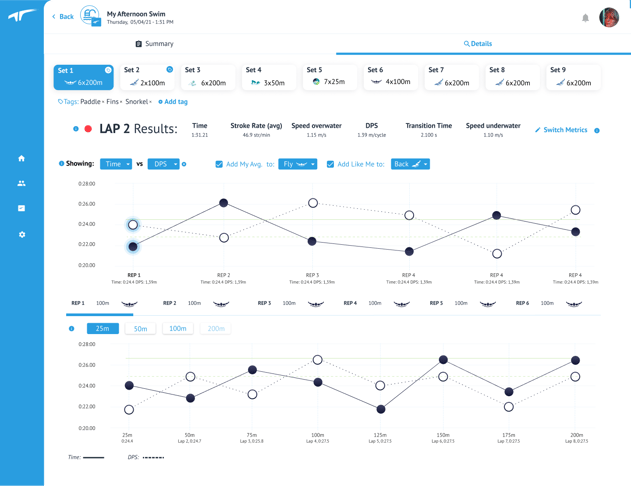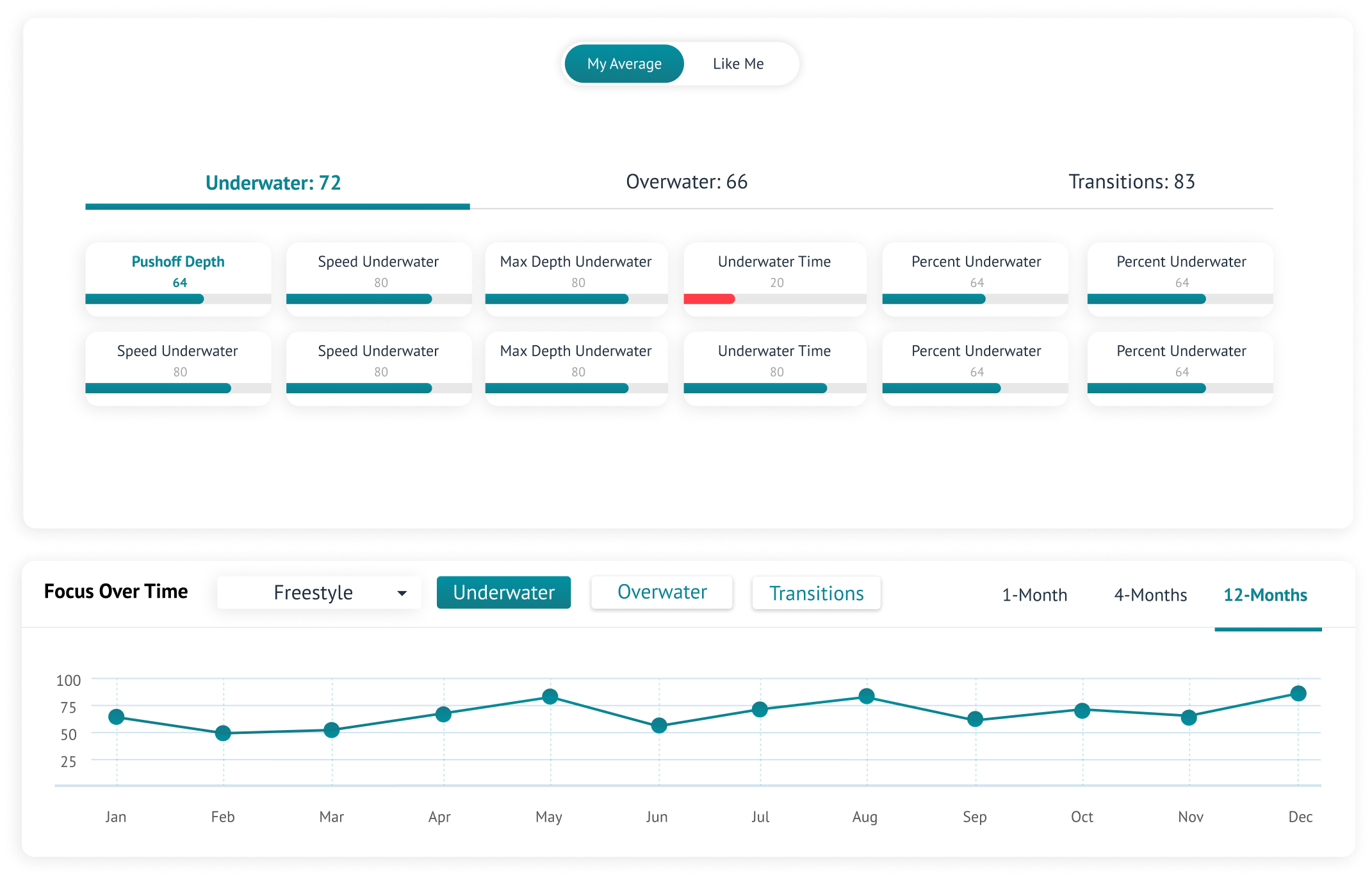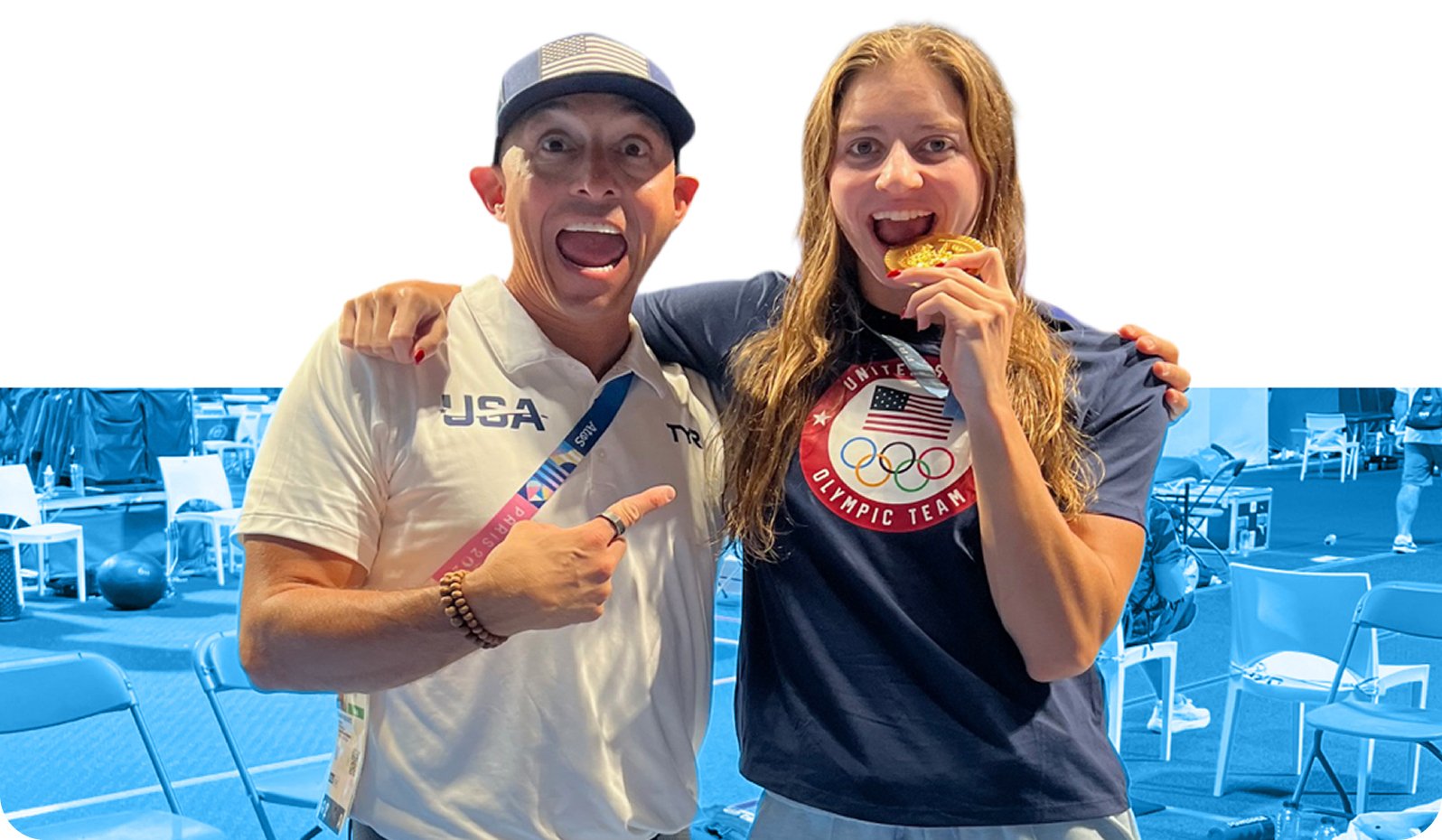One major benefit of using TritonWear is getting athletes involved in reviewing their own data. Once each workout is synced, athletes can log in to their TritonWear mobile app and go to their Activities feed to view their results. This enables an invaluable understanding of what goes into their performance.
With all this information at their fingertips, athletes require guidance from coaches to understand how best to navigate and interpret the results in relation to their swimming style and goals.
 Each athlete will need to focus on different things, looking at specific trends or results to affect changes in their performance. This presents coaches with a unique opportunity to educate athletes, of all ages. Try to offer direction on what to look for when reviewing results, and involve athletes in determining what to do with the findings.
Each athlete will need to focus on different things, looking at specific trends or results to affect changes in their performance. This presents coaches with a unique opportunity to educate athletes, of all ages. Try to offer direction on what to look for when reviewing results, and involve athletes in determining what to do with the findings.
In this post, we outline a few ways to use insights to help foster improvements, divided into two categories. Items to look at on a micro level more frequently and track progress from a macro viewpoint throughout the season.
Micro Insights

When working on the micro-level, the best place to begin is tracking progression throughout sets. When in use, TritonWear records every repetition, building out each set based on pace time and/or distance. Capturing this information enables athletes to monitor how each metric changes throughout the course of a set, identifying areas for improvement.
Consistency is key
When reviewing progression, the first thing to look for is consistency throughout a set. Ideally, metrics should remain stable length over length throughout a set, depending on criteria (ie. ascending, descending or race pace, etc.). Overlaying multiple reps or sets on a graph in Insights will immediately highlight any inconsistencies.
Dig into the data
The next step is to dig into what may be causing any significant changes in performance. Did DPS or Stroke Rate drop too much? Did Turn Times increase? Or did a drop in the Stroke Index on a given length suggest inefficiency? Each athlete will uncover different challenges by reviewing results in TritonWear Live Activities. This learning enables them to bring valuable feedback to practice, where collaborative discussions with coaches help define a personalized training strategy.
Analyzing off practices
There is a cause and effect for everything, including an inability to stay consistent throughout a set. Live Activities provide clarity and actionable direction to stabilize by making it possible to pinpoint the moment in a set where the performance began to falter. Once identified, check the lengths leading up to and during the lapse in performance to reveal what changed. A few specific areas to look at include:
A slowdown in Stroke RateAn increase in Stroke Count
A drop in DPS
A fluctuating Stroke Index.
Having this information provides visibility into what went wrong beyond just being “too tired” or “didn’t get enough to eat”. These are the causes; the metrics are the effects. Being able to articulate the effect of not getting enough sleep, taking a vacation mid-season, or not taking in enough calories to sustain a workout is paramount. It enables athletes to understand their bodies better and the effects personal choices have on performance. It also increases the likelihood they will hold themselves accountable for their own improvements.
Analyzing excellent practices
Conversely, it is equally important to understand what went right after a set an athlete excelled in. Excelling at a set comes in many forms; maybe they indicated ''it felt great,'' or they held better times or stayed consistent throughout the whole set statistically. By reviewing the data from this workout, differing behaviours become immediately apparent. Maybe the athlete remained underwater longer or maintained a stronger DPS throughout the set. Translating findings into key focal points allows athletes to replicate the behaviour and acts as a great motivator.
Utilizing specific metrics - like Stroke Rate
Using Stroke Rate (SR) is also a great way of using Focus Over Time. Stroke Rate is measured as the duration of a single stroke cycle (i.e. completing a pull on both arms). You can read more about understanding Stroke Rate here. A higher Stroke Rate means the swimmer is pulling at a higher speed. Look at the Stroke Rate metric progression throughout different periods of time. How did it progress throughout the practice? Or this week compared to last week. This metric shows improvements in a swimmer's ability to stroke faster. It is, however, best used in conjunction with DPS to determine the best SR for each person.
Be stopwatch free
The simplest, most freeing feature of TritonWear is the automation of data collection. Without having to stand at the wall recording stats, coaches can watch the technique. After practice, swimmers and coaches can use data, scores and insights to track their progress all season.
Mining for gold - or at least great insights
Finally, a smart swimmer checks their Triton Score daily to ensure they are training well every practice. Conversely, using Focus to review fluctuations in metrics enables them to understand why they slow down at certain points. With this information in hand, athletes and coaches can have an informed conversation to collaboratively develop a training plan, based on the findings. Athletes suddenly know their workouts are personalized to help them improve as fast as possible.
Macro Insights

To manage expectations and celebrate achievements, athletes need to view their data on a macro level as well. To see improvement and change on a larger scale, for a whole month, quarter or over a year of training. This will allow coaches and athletes to monitor progress and adjust when needed. The clear visualization of performance data over time on the Focus Progress Graph provides clarity on decisions. An informed decision can be made between continuing with a training plan or trying something new if progress isn’t meeting expectations.
Goal setting
Goal setting. We did a separate post on setting goals using TritonWear, but we’ll touch on it here as well. Setting goals is a proven way to improve effort and motivation, whether it be in an office or pool. TritonWear truly helps athletes set productive and meaningful goals. With access to deep analytics, coaches and athletes can set SMART performance goals to foster improvement.
Set goals, such as improving average turn time by X, or increasing stroke rate or speed by Y. Suddenly, practices focus on specific targets, allowing athletes to leave feeling accomplished. Once those goals were hit, it's easy to evaluate where to focus next. It is also important to monitor the progression of a specific metric, like increasing average turn time, stroke index, speed, or DPS, over the course of a longer period. This helps coaches and athletes understand what stands in the way of ultimate outcome goals.
Final Thoughts
Incorporating data and technology in training helps any team make rapid, focused improvements. However, without knowing how to interpret and utilize the data, it can be a time-consuming exercise with little benefit. Building an understanding of the numbers and how to interpret and use them appropriately enables real improvements.



.png)


.png)